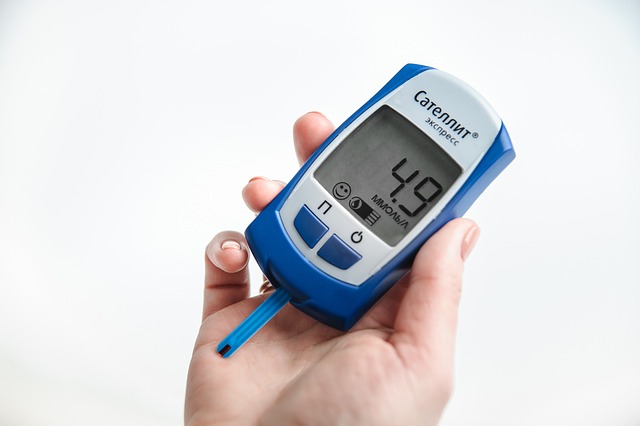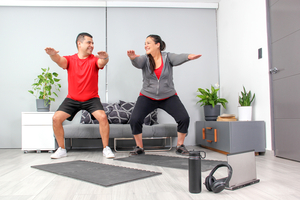What does it mean if you learn that you are prediabetic? Is it big news? Is it just "one more thing" that your doctor will be hounding you about? Prediabetes means that you are at higher risk for developing type 2 diabetes, but there is more to the story. Treatments are possible and there are many treatments for prediabetes.
Your experience being prediabetic can depend on:
- How well you take care of it at home
- Your diet
- Your attitude towards self-management and treatment
If you are prediabetic, you need to know what that means so you can take care of yourself as best possible. If you are not prediabetic, it is still relevant because chances are good that you know one or more people who are.
How do you know if you're "Prediabetic?"
First things first: what does it mean to be prediabetic ? It means that your blood sugar, or blood glucose, is higher than normal, but not as high as it is in diabetes. The changes in your body that lead to higher blood sugar can begin to happen years before your blood sugar starts to increase enough to become prediabetic (also known as "borderline diabetes").
Carbohydrates, Insulin, and Blood Glucose
You may have heard of all of these, but what is their relationship to each other, and what do they have to do with you and your prediabetes? Carbohydrates are in foods and some beverages. When you eat or drink, your body breaks them down into a type of sugar called glucose, which goes into your bloodstream.
When everything is healthy, your pancreas releases a hormone called insulin. Insulin helps the cells of your body take up glucose from the blood, which lowers your blood glucose level back down.
In prediabetes, you have developed insulin resistance. The cells of your body are more resistant to insulin, or less insulin sensitive. They have trouble taking up glucose from your bloodstream. For a while, your pancreas can produce more insulin to compensate, but only for so long. Eventually, the system breaks down and your blood sugar starts to rise. This is when prediabetes can be diagnosed. If the condition progresses, you can develop type 2 diabetes.
Prediabetes Tests
Your doctor likely told you that you are prediabetic after you took one or more blood tests. These are the tests that can be used to diagnose prediabetes.[1]
- FBG (fasting blood glucose): Your FBG is a measure of how much glucose is in your blood after an overnight or 8-hour fast. A prediabetic FBG value is 100 to 125 mg/dl.
- A1c (glycated hemoglobin): The A1c test shows how high or low your blood sugar has been, on average, over the past three months. A prediabetic A1c is 5.7 to 6.4%.
- OGTT (oral glucose tolerance test). The OGTT shows whether your body has trouble processing glucose, as you drink a solution with 75 grams of glucose and get your blood sugar tested after 2 hours. A prediabetes OGTT value is 140 to 199 mg/dl.
If your first prediabetes test comes back positive, your doctor may order a repeat test is for confirmation that you have prediabetes. Values higher than the values for prediabetes show that you may have diabetes.
Why Did You Get Prediabetes?
Many people have prediabetes. Who gets it, and why? Why did you get prediabetes?
Some of the risk factors for prediabetes are genetic or non-modifiable. You are at higher risk if you have family members with type 2 diabetes, you are at least 45 years old, or you have high cholesterol or blood pressure. Pacific Islanders, African Americans, Native Hawaiians, Latino/Hispanics, and Native Americans are also at higher risk.
Certain risk factors for prediabetes are modifiable. They are also risk factors for diabetes. It is not too late to work on reducing these risk factors if you have any of them.
- Being overweight or obese. For perspective, that is a weight of 145 lb. (overweight) or 174 lb. (obese) if your height is 5'4", or a weight of 179 lb. (overweight) or 215 lb. (obese) if your height is 5'11".[2]
- Being physically inactive. The recommendation for exercise for the general public and if you have prediabetes is to get at least 150 minutes per week of aerobic activity, such as walking, dancing, playing basketball, or cycling.
- Having high blood pressure or cholesterol levels. You may not be able to completely control these, but you can eat healthy and follow your doctor's advice to manage them.
Prediabetic vs. Diabetic
The conditions may be similar, but there is a world of difference between prediabetes and diabetes. These are some of the differences.
Symptoms
You are unlikely to get symptoms of prediabetes, but you may get diabetes symptoms if your prediabetes progresses to type 2 diabetes. [3] The symptoms can include poor wound healing, blurred vision, numbness in your hands and feet, fatigue, hunger, excessive thirst, increased urination, and weight loss. Do not wait until these symptoms occur before you take action!
Management
A major difference between being prediabetic and diabetic is how you manage it. While your management plan for both should include a healthy diet and regular activity, diabetes management can also include:
- Daily blood glucose testing up to 5 or more times a day.
- Medications, including injectable insulin.
- Extra appointments with dentists, eye doctors, and podiatrists.
- Monitoring for kidney disease and other complications.
Prediabetic Treatment
Compared to treatment for diabetes, prediabetic treatment often places a greater emphasis on lifestyle changes than on medications and testing. You may need prescription medications as well, but injectable insulin and daily blood sugar testing are not common with prediabetes.
Diet
The best prediabetic diet can help you lose weight, if you are overweight or obese. It can guide you towards making healthier choices, as some foods are better for lowering blood or increasing insulin sensitivity, while other foods tend to raise blood sugar or increase insulin resistance.
Weight loss can be one of the most effective treatments you do if you are overweight or obese, and you do not need to lose massive amounts of weight to gain benefits. In one study, each kilogram, or 2.2 lb., that diabetic participants lost was linked to a reduced risk for diabetes of 16%.[4] Many experts agree that losing 5 to 10% of your body weight can have substantial benefits.[5]
You can lose weight by making small changes to your regular diet. For example:
- Reduce portion sizes of higher-calorie foods. For example, cut your regular dessert in half, and order a half-portion at restaurants (or pack up half before you start eating).
- Fill up on low-calorie foods. For example, start your meal with a broth-based, chunky, vegetable soup or salad, pile your dinner plate high with steamed vegetables, and include raw vegetables between meals.
- Make substitution for higher-calorie foods. For example, top pasta with marinara sauce instead of alfredo sauce, snack on fresh instead of dried fruit, and use mustard instead of mayo on sandwiches.
You can support blood sugar control by choosing certain foods over others. General guidelines for a healthy diet include:
- Choosing water or decaffeinated tea or coffee instead of sugar-sweetened beverages such as soda, energy drinks, and sports drinks.
- Increasing dietary fiber by upping the vegetables and legumes, and choosing whole grains instead of refined.
- Limiting processed meat and fatty red meat.
- Eating more fish, reduced-fat dairy products, and plant-based proteins.
- Limiting sugar-sweetened foods, such as cookies and cakes, ice cream, and candy.
- Limiting fried foods, such as French fries, fried chicken, doughnuts, and onion rings.
Since blood glucose is related to carbohydrates, it makes sense that selecting your carbohydrates carefully can affect your blood sugar.[6] The glycemic index diet is based on the fact that some types of carbohydrates spike your blood sugar more and faster than others. Any fat or protein that you eat with those carbohydrates also affects the glycemic response.
To follow a low-glycemic diet, consider both the glycemic index of foods, using a glycemic index list, as well as the amount of carbohydrates they have. In general, these guidelines can help you follow a low-glycemic diet.
- Choose high-fiber carbohydrates, while limiting simple sugars and refined starches.
- Include a source of healthy fat and lean protein when you have a meal or snack with carbohydrates.
- Choose less processed foods when you can.
- Keep portions in check, with a goal of 15 to 45 grams of carbohydrates per meal.
Exercise
Exercise is another pillar of prediabetic treatment. Both aerobic exercise and resistance, or strength-training, exercise, increase insulin sensitivity and help with weight control.[7] The Centers for Disease Control and Prevention (CDC) recommends at least 150 minutes per week of aerobic activity, plus strength training two to three times per week. Consider the following:
- Aerobic activities get your heart rate up continuously and get you out of breath enough that you cannot sing a song, but not so much that you cannot speak a word.
- Examples include walking, cycling, hiking, playing basketball, and gardening: activities that.
- Strength training can include
- When strength training, aim to hit all of your muscle groups

Be sure to get your doctor's approval before starting an exercise program.
Diabetes Prevention in Prediabetes
The Diabetes Prevention Program (DPP) is fully recognized by the CDC as an effective way to lower type 2 diabetes risk if you have prediabetes. In a clinical trial, prediabetic patients who were part of the DPP had a 58% lower risk of developing diabetes than patients who were in a control group.[8] Compared to a control group, the risk among patients who took a prediabetes medication (metformin) was 31% lower. The bottom line is that lifestyle changes in the DPP were effective, and even more effective than medication, in preventing or delaying the onset of type 2 diabetes.
The DPP:
- Promotes healthy weight, activity, and other lifestyle changes to lower type 2 diabetes risk if you have prediabetes.
- Includes a curriculum with 26 lessons that you can take over the course of a year.
- Offers strategies for handling real-life challenges, such as eating out, getting off track, managing stress, and grocery shopping.
You can find out if you are eligible for
and sign up for Lark DPP. The program is digital and available all the time on your smartphone, and it may be covered by your health insurance. Your Lark health coach is ready to chat with you anytime about your meals, mood, activity, and more.
If you are prediabetic, find out all you can about your options and getting treatment. You can lower your risk for type 2 diabetes, and your effort will be well worth it.












.webp)






